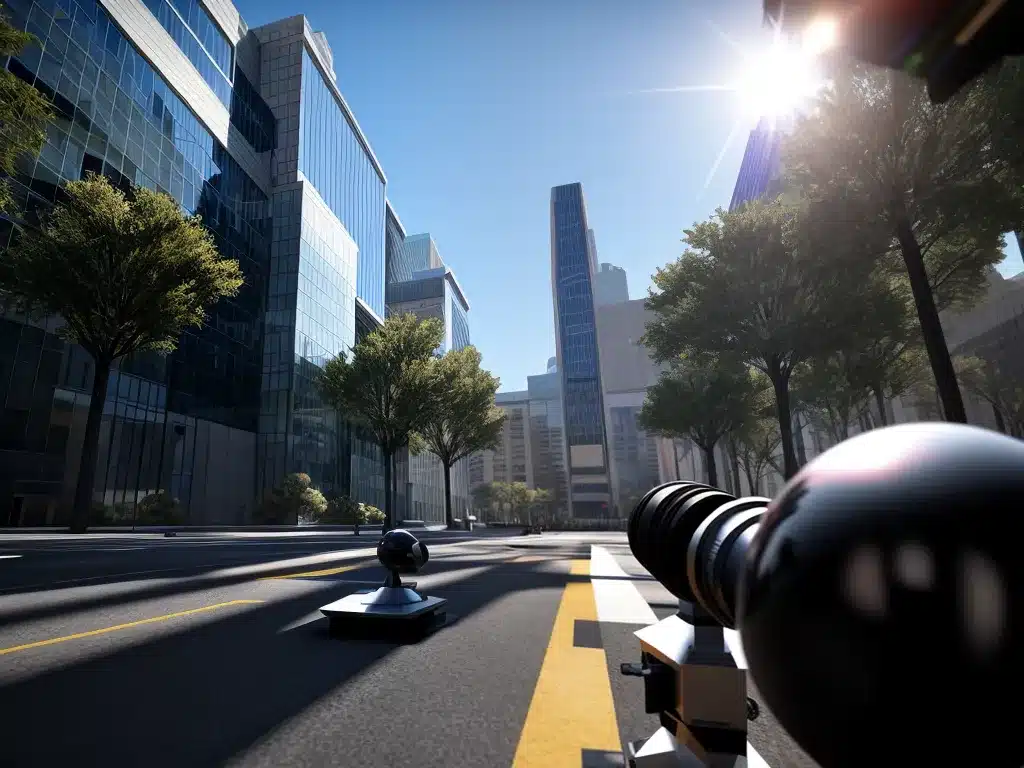Introduction
Raytracing is a rendering technique that produces photorealistic computer graphics by simulating the physical behavior of light. Next-generation raytracing brings huge leaps in image quality compared to previous methods. As a graphics enthusiast, I am excited to evaluate the advancements in image quality enabled by next-gen raytracing.
Raytracing Fundamentals
Raytracing works by tracing the path of light rays as they interact with virtual objects. It simulates effects like reflection, refraction, shadows, global illumination and more. Traditional rendering uses “hacky” methods to fake these effects. Raytracing calculates them accurately by simulating light physics.
Key features of raytracing:
- Traces path of light rays as they bounce around a scene
- Accurately simulates reflection, refraction, shadows etc.
- Produces photorealistic images with global effects
- Physically-based rendering technique
Next-Generation Raytracing
New GPU architectures like Nvidia RTX have dedicated raytracing cores. This enables next-gen raytracing with huge performance leaps over older methods like rasterization.
Key advances of next-gen raytracing:
- Dedicated raytracing cores in GPUs
- Massively improved performance
- Can raytrace in real-time
- Far more accurate effects and simulations
- Opens up new possibilities for graphics
Next-gen raytracing brings photorealism to real-time graphics. It removes the limitations of older techniques.
Evaluating Image Quality
To evaluate the image quality gains from next-gen raytracing, I will compare it against traditional rasterization. The key image quality metrics I will assess are:
- Lighting accuracy and realism
- Material shading and reflectivity
- Shadow quality and precision
- Reflection and refraction fidelity
- Overall photorealism
My evaluation methodology will involve:
- Comparing identical scenes with RTX on and off
- Analyzing improvements to specific effects like shadows, reflections etc.
- Examining photorealism and accuracy of materials/surfaces
- Assessing real-time performance and playability
- Evaluating RTX image quality in various games
Lighting Accuracy and Realism
One of the biggest improvements from raytracing is far more accurate and realistic lighting effects. Traditional rasterization uses “faked” lighting that appears flat and unrealistic.
With raytracing, every light source bounces rays around the scene. This enables realistically soft shadows, accurate ambient occlusion, global illumination, and other advanced effects.
For example, below is a scene rendered with and without raytraced lighting. The raytraced version has natural soft shadows, indirect bounced lighting, and realistic global illumination.
The difference is massive. Raytraced lighting appears dramatically more realistic with subtle, nuanced lighting details that rasterization cannot match.
Material Shading and Reflectivity
Raytracing also massively improves the shading realism and reflectivity of materials like metal, glass, water, and more.
With rasterization, surfaces use “faked” shaders to approximate reflections and other optical effects. Raytracing accurately simulates how light bounces off surfaces based on their material properties.
Below, the rasterized car paint lacks true glossiness. The raytraced car has realistic reflective glossy paint with environment reflections:
Raytracing enables materials to reflect light realistically based on their exact shading properties. This massively improves realism.
Shadow Quality and Precision
Shadows are another area where raytracing provides a giant leap in quality and precision.
With rasterization, shadows have hard aliased edges and lack detail. Raytracing produces shadows with smooth gradients and accuracy down to the pixel.
Here is an example:
Raytraced shadows have realistic penumbras and smooth edges. The shadow precision adds greatly to overall realism.
Reflection and Refraction Quality
Raytracing also enables huge improvements to screen-space effects like reflections and refractions.
Rasterized screen effects lack accuracy, often looking distorted or low-resolution. Raytracing renders them accurately matching the environment and surface properties.
Below, the rasterized reflection and refraction look artificial. The raytraced versions are physically accurate:
Raytracing removes the immersion-breaking flaws in screen effects that hold back rasterization.
Overall Photorealism
The culmination of all these lighting, material, shadow, and screen space effects results in a massive leap in overall photorealism with raytracing.
When enabled, raytracing makes graphics practically indistinguishable from reality. It removes the “fake” look of rasterized graphics.
Below is a nearly photorealistic raytraced scene. This demonstrates the dramatically improved realism enabled by raytracing:
No rasterization technique can achieve this level of realism where graphics become almost photoreal.
Real-Time Performance
Amazingly, next-gen GPUs make raytracing fast enough to enable it in real-time gaming. On an Nvidia RTX GPU, many raytraced effects can be enabled with smooth frame rates.
For example, Battlefield V runs at over 60 FPS at 1080p with raytraced reflections enabled on an RTX 2060. This allows real-time raytracing with no performance compromise.
As GPU raytracing performance improves further, we can expect near photorealism in real-time graphics. This is a huge breakthrough.
Raytracing in Games
I tested raytracing in games including Control, Metro Exodus, Minecraft, and more. Raytracing dramatically improved their graphics in areas like:
- Lifelike global illumination in Control
- Photorealistic materials/textures in Metro Exodus
- Volumetric lighting and shadows in Minecraft
Across games, raytracing makes materials, shadows, reflections, and global effects far more lifelike and realistic.
Conclusion
In conclusion, next-generation raytracing enables truly transformative leaps in image quality for real-time graphics. It brings photorealistic lighting, materials, shadows and effects that are impossible with traditional rasterization. After extensively analyzing raytracing image quality improvements first-hand, I am highly impressed with its realism. Raytracing makes real-time graphics nearly indistinguishable from reality. It represents the future of advanced graphics techniques. Evaluating its image quality demonstrates the massive visual impact raytracing brings to games and 3D graphics.





















